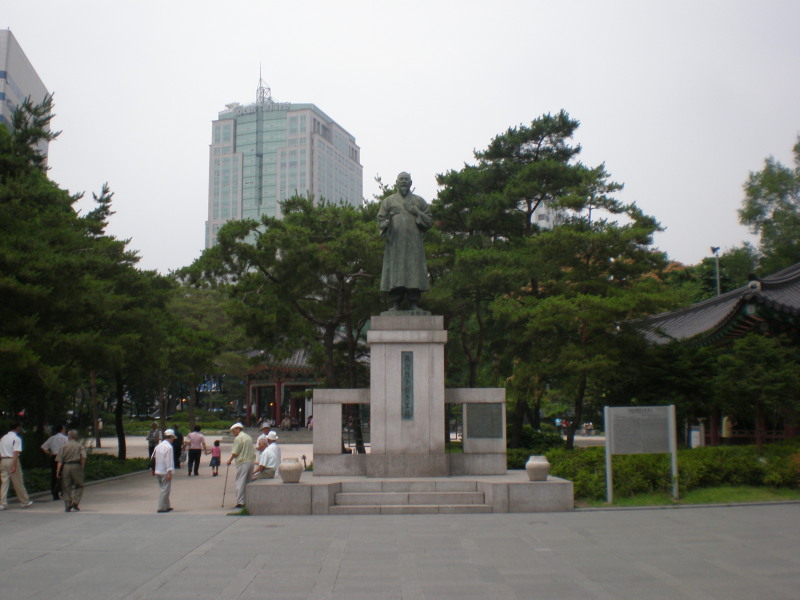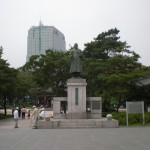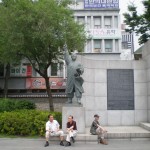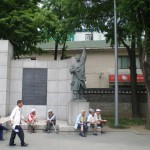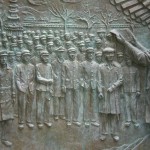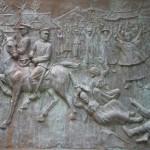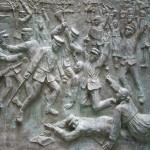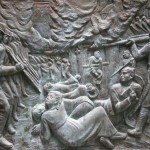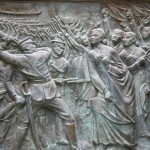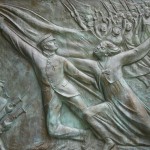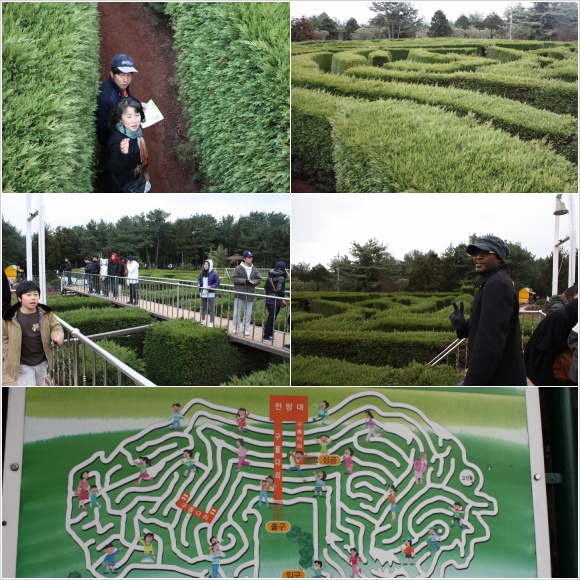From Wikipedia:
Tapgol Park is a small (19,599 m²) public park located at 97 Jongno-gil, Seoul, South Korea. This park was once a site of Wongaksa temple. The word tap means “pagoda“, and the park gets its name from Wongaksa Pagoda 10 tier pagoda (national treasure No.2) in the park.
Tapgol Park is historically important as the site of the origin of the March 1st Movement 1919, an important part of the Korean independence movementas the first location for the reading of the Declaration of Independence.
It was previously the site of a 15th century Buddhist temple, and a 10 tier pagoda and a few relics of the temple still can be seen in the park. It was organized as a garden by the British advisor to provincial subdivision in 1897, and opened to the public in 1920. There are many statues and monuments in the park, dedicated to various various patriots and victims of Japanese brutality.
There are a number of bas-relief statues representing Korean patriots, the Declaration of Independence Monument, and a poem by Han Yong-un.As an important place in recent Korean history, it is a popular place for demonstrations of various kinds.
